Global Accessibility Awareness Day: A Publisher’s Toolkit
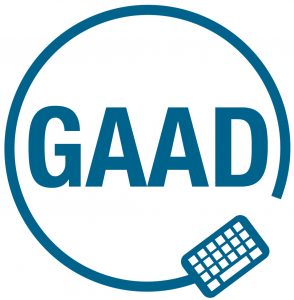 GAAD takes place on May 15 this year and we’d like to encourage all our readers to take part so that we can build awareness in our industry and play our part to increase the availability of your digital content to people with print disabilities. If your organization has an accessibility advocate then this is their chance to build awareness and co-ordinate activities that your teams may be able to take part in whether at home or in the office. If not, then perhaps you can encourage your own team or teams that you work closely with to participate.
GAAD takes place on May 15 this year and we’d like to encourage all our readers to take part so that we can build awareness in our industry and play our part to increase the availability of your digital content to people with print disabilities. If your organization has an accessibility advocate then this is their chance to build awareness and co-ordinate activities that your teams may be able to take part in whether at home or in the office. If not, then perhaps you can encourage your own team or teams that you work closely with to participate.
There are always many exciting events surrounding GAAD and we have put together a few ideas in our annual GAAD Toolkit to help you organize something yourself. It might be an event surrounding awareness building and advocacy or it might be a more technical dive into what makes an accessible ebook. Whatever you choose, please send us the details so that we can tell others about your good work and build on this for future events. We have lots of ideas to get you started:
Celebrate Your Success
GAAD presents an opportunity you to reflect and to celebrate how far you have come on your accessibility journey. Take a moment to remind yourselves about the challenges you’ve overcome and think about all the wins, both big and small, that have contributed to where you find yourself today. Take a moment to celebrate with colleagues!
Awareness Building
Building awareness remains as important as ever:
- Put together a blog piece in advance of GAAD. This will help to raise awareness amongst your colleagues about what GAAD is all about. We have resources and tools that you can include in your own post to spark interest and encourage questions! A good place to start is our Introduction to Inclusive Publishing.
- New for this year is our A-Z of Accessible Digital Publishing which is a fun, high level overview of accessibility which you may like to incorporate into your plans for the big day.
- Alternatively, you are welcome to cross-post any of the interesting articles that we have published on Inclusive Publishing during the last year. Contact us if you need help finding the correct piece for your newsletter.
- Think about updating your accessibility statement in time for GAAD. Have a look at the work of ASPIRE which is all about increasing the effectiveness of your organizational accessibility statement
- Hold an online social event to promote your support of accessible publishing. Set up a “party” online to discuss awareness issues and next steps for your company when you return to the workplace. (Zoom offers the most accessible online conferencing experience we have found).
- Introduce your colleagues to web accessibility and W3C standards via this W3C video session, available in numerous languages.
User Experience
GAAD is a great chance to find out for yourself what it’s like to be a print disabled reader. You can put together all manner of sessions to focus on this but here are a few ideas:
- Go mouseless for an hour—unplug your mouse and only use your keyboard (tab/shift tab, arrow keys, enter and spacebar) to navigate and interact with content.
- Experience reading using assistive technology – try 10 minutes with a screen reader for example
- You may wish to set up a UX session so that your colleagues can experience accessibility features such as Voice Over.
- Try your hand at writing image descriptions—collect a few images from the content that you publish together with some contextual information. See how your colleagues fare in writing alt text! This could be a fun challenge that would be easy or organise for those of you working from home.
- Encourage your colleagues to watch the new UX demos which formed part of the NNELS accessible publishing summit this year. These YouTube demos concentrated on Reflowable EPUB and Fixed Layout EPUB and were invaluable.
Accessible EPUB
- GAAD for Geeks! If your technical ebook developers can run an online demonstration of what makes an EPUB accessible it would be a fantastic resource for you to share with colleagues. The benefits of using EPUB 3 are significant for accessibility and a short presentation about this would greatly increase understanding of the technical advantages of building a11y in from the very start of the content creation process. See our top tips page for some guidance on this.
- Ask the Expert! EPUB for non-technical teams. Try running something similar for your non-technical teams. They may not need to know the technical details but will appreciate and understand information on how your content production teams are handling accessibility for mainstream product. Our EPUB resources pages for publishers will be able to give you some pointers on this. They will be delighted to know that you have this in-hand!
Webinars
Encourage your colleagues to watch one of our free webinars available on the DAISY YouTube channel. We have many different sessions available already and lots more planned for the future so this would be a terrific time to ask your co-workers to choose something new and interesting. If you host a discussion following a webinar viewing you could initiate some interesting debate which we would love to hear about.
Events
We are gathering information on events that are happening during the week of GAAD. Let us know if we’ve missed something our readers might like to be involved in or that may inspire them for their own planning!
Whatever you decide to do in your own organization we applaud you! This is a terrific opportunity to create a focus amongst your team and encourage support for Inclusive Publishing. We would very much like to hear from you about your events so that we can let others know what you’ve been up to! Contact us here.



 EPUB 3.3 is nearing publication and, as such, is mostly fixed in what it will contain. It remains the most accessible publishing option for content creation and this, it’s final iteration, offers the most accessible experience for print disabled readers.
EPUB 3.3 is nearing publication and, as such, is mostly fixed in what it will contain. It remains the most accessible publishing option for content creation and this, it’s final iteration, offers the most accessible experience for print disabled readers. 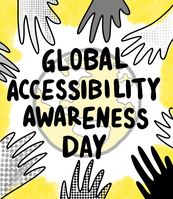 Global Accessibility Awareness Day 2022 (#GAAD) took place on May 219 this year and we put together some tools and resources to encourage partners, publishers and industry bodies to promote awareness amongst colleagues. Building on activities from previous years we saw our industry actively up their game this year and get more involved in educating colleagues and customers who are busy playing their part to increase the availability of digital content to people with print disabilities, despite the challenges of the past couple of years. Congrats to all who took the time and made the effort to reaffirm their commitment to accessible publishing by marking this event in some way. We were amazed by the recognition that you gave to GAAD and urge you to continue in this vein.
Global Accessibility Awareness Day 2022 (#GAAD) took place on May 219 this year and we put together some tools and resources to encourage partners, publishers and industry bodies to promote awareness amongst colleagues. Building on activities from previous years we saw our industry actively up their game this year and get more involved in educating colleagues and customers who are busy playing their part to increase the availability of digital content to people with print disabilities, despite the challenges of the past couple of years. Congrats to all who took the time and made the effort to reaffirm their commitment to accessible publishing by marking this event in some way. We were amazed by the recognition that you gave to GAAD and urge you to continue in this vein. Taylor and Francis: Lunch and Learn
Taylor and Francis: Lunch and Learn Launch of UK PAAG Linkedin Network
Launch of UK PAAG Linkedin Network Blackboard Fix Your Content Day
Blackboard Fix Your Content Day Kogan Page Top Tips
Kogan Page Top Tips Scribely Shorts
Scribely Shorts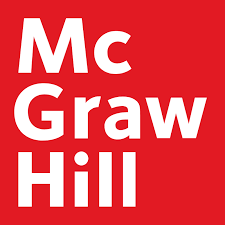 McGraw Hill Education
McGraw Hill Education Amnet: Digital Accessibility, No Longer An Afterthought
Amnet: Digital Accessibility, No Longer An Afterthought Hassell Inclusion
Hassell Inclusion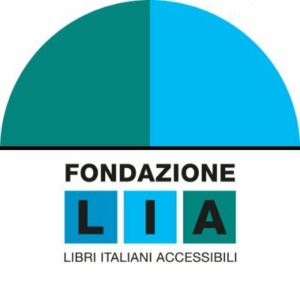 Reading in the Dark
Reading in the Dark VitalSource
VitalSource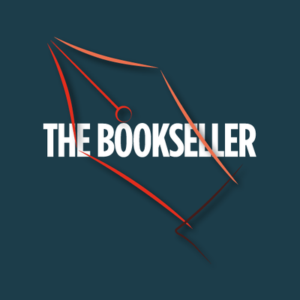 This article was written by Chloe Johnson (@ladychloestark) and published in
This article was written by Chloe Johnson (@ladychloestark) and published in 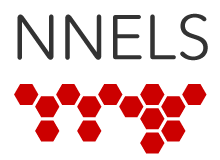 Last week saw the 4th iteration of the hugely successful
Last week saw the 4th iteration of the hugely successful  Coming up with impactful eLearning content can be a complicated process with different facets to it. It is essential to create eLearning content that arouses the curiosity of learners and keeps them engaged for the entire duration of the course. At the same time, the content needs to be relatable to your target audience and ensure long-term knowledge recollection. The last requirement assumes greater significance given the absence of an actual instructor and any person-to-person interaction.
Coming up with impactful eLearning content can be a complicated process with different facets to it. It is essential to create eLearning content that arouses the curiosity of learners and keeps them engaged for the entire duration of the course. At the same time, the content needs to be relatable to your target audience and ensure long-term knowledge recollection. The last requirement assumes greater significance given the absence of an actual instructor and any person-to-person interaction.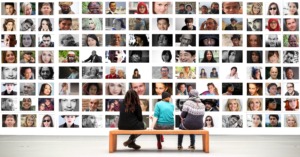 Towards the end of 2021 we held a special DAISY Information Sharing Day webinar. Maarten Verboom, President of The DAISY Consortium, opened the session by welcoming the large audience and explaining that events would be divided into three sessions. You can catch up on each session via the links below.
Towards the end of 2021 we held a special DAISY Information Sharing Day webinar. Maarten Verboom, President of The DAISY Consortium, opened the session by welcoming the large audience and explaining that events would be divided into three sessions. You can catch up on each session via the links below.